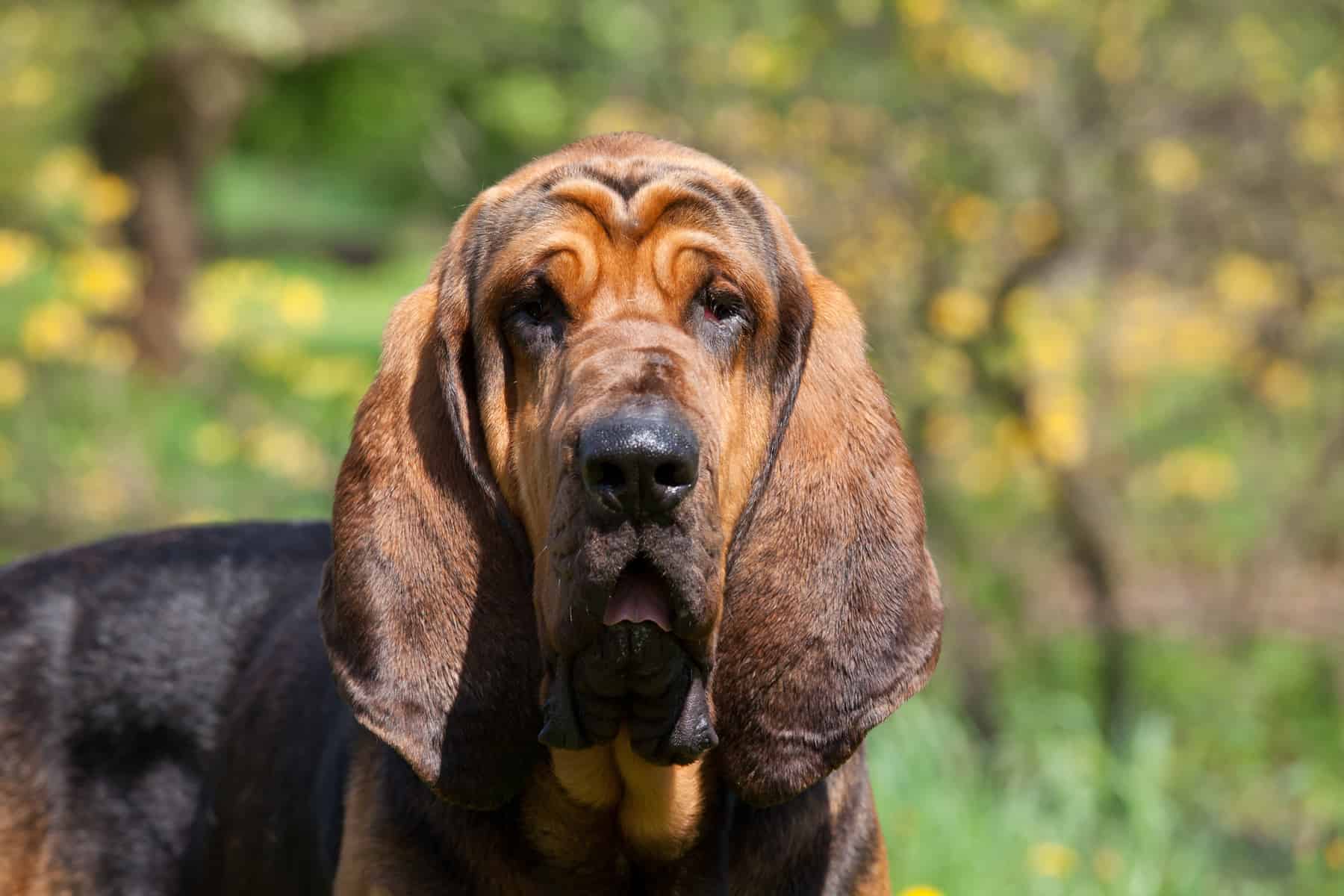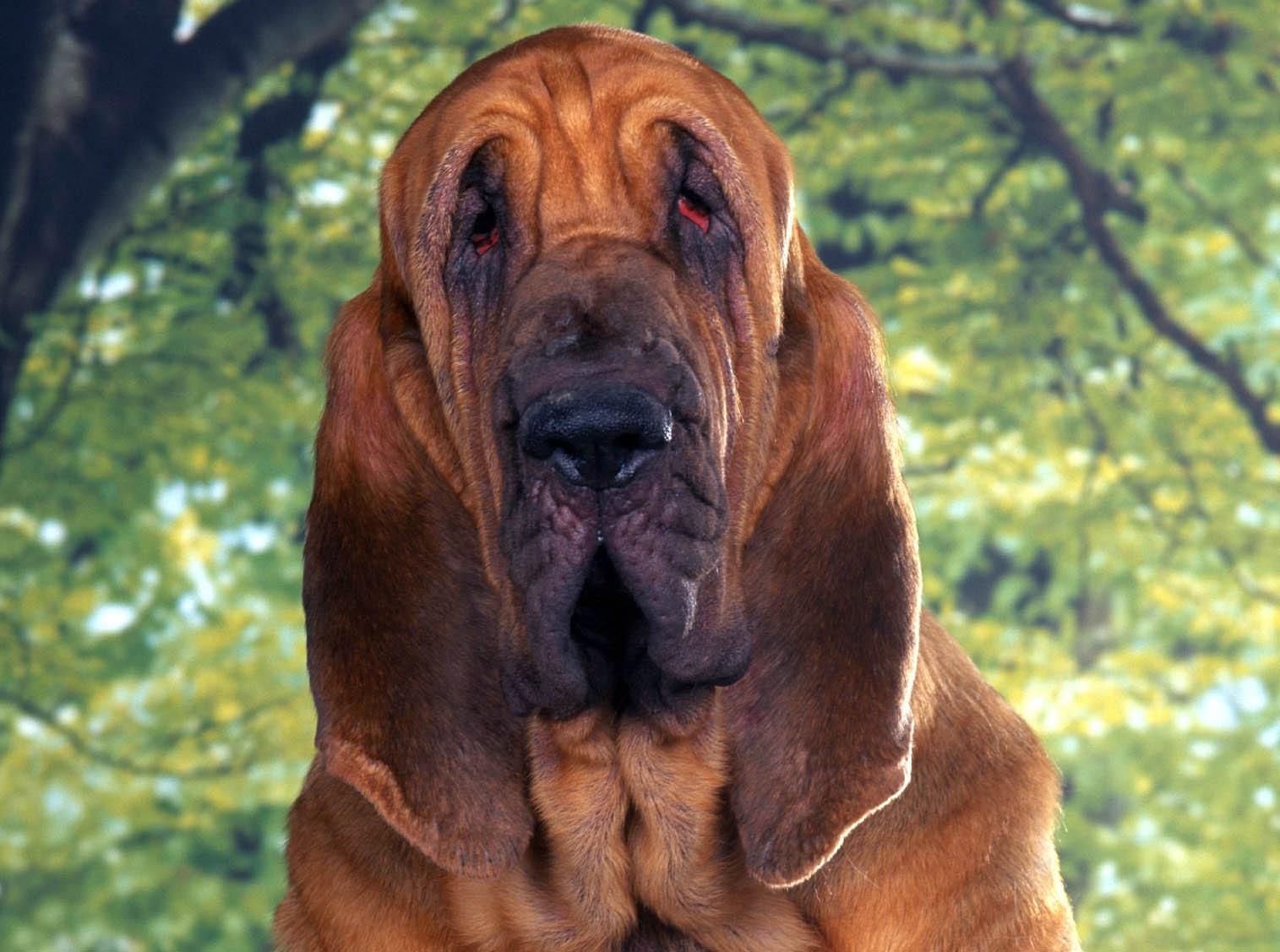Bloodhound Lil Jeff Height: Unpacking The Stature Of These Noble Scent Hounds
Have you ever wondered about the impressive size of a bloodhound, perhaps even a specific one like "Lil Jeff"? These dogs, with their distinctive long, droopy ears and wrinkled faces, are quite something to behold. They are known for their incredible sense of smell, so, too it's almost, their physical presence is just as notable. Understanding the typical height of a bloodhound helps us appreciate these amazing creatures and what it takes to care for them.
Bloodhounds are, in a way, very much a breed that commands attention, not just for their tracking prowess but for their substantial build. They are, after all, large scent hounds, originally bred for hunting deer, wild boar, and even rabbits, as my text says. Since the middle ages, they have been tracking people, a skill that relies on their powerful noses. This history of demanding physical tasks hints at their robust frame and considerable height.
So, what exactly goes into the height of a bloodhound like "Lil Jeff"? We'll explore the breed standards, how genetics play a role, and what factors might influence a bloodhound's overall growth. It's really quite interesting to see how these dogs develop into the impressive adults we know, apparently, making them excellent companions and working animals.
Table of Contents
- Understanding Bloodhound Height: The Breed Standard
- What Influences a Bloodhound's Size?
- Lil Jeff and the Typical Bloodhound Stature
- History and Purpose: Shaping Their Build
- Caring for a Large Breed Like a Bloodhound
- The Bloodhound Personality: Beyond Their Size
- Training and Discipline for These Big Dogs
- Health Considerations for a Large Breed
- Grooming a Bloodhound of Considerable Size
- The Unique Nose and How It Fits Their Frame
- Living with a Bloodhound: Their Space Needs
- Bloodhounds in History and Modern Times
- Frequently Asked Questions About Bloodhound Height
Understanding Bloodhound Height: The Breed Standard
When we talk about the height of a bloodhound, we are usually referring to their size at the shoulder, which is called the "withers." For a male bloodhound, the typical height range is from 25 to 27 inches. Female bloodhounds are usually a bit smaller, standing between 23 and 25 inches tall. These measurements come from breed standards, which describe the ideal characteristics of a bloodhound, so, in some respects, they give us a good benchmark.
The AKC breed standard, for instance, provides these specific ranges. These standards help breeders maintain the integrity of the breed. They also give prospective owners an idea of what to expect in terms of a bloodhound's adult size. A dog that falls within these ranges is considered well-proportioned for the breed, really. This helps ensure that future generations of bloodhounds continue to possess the physical attributes necessary for their historical roles and general well-being.
It is important to remember that these are averages. An individual bloodhound might be slightly taller or shorter. Factors like genetics, nutrition, and overall health can play a part in a dog's final height. A healthy diet during puppyhood is, you know, quite important for proper bone and muscle development. This early care sets the foundation for their full potential stature.
The breed standard also considers the overall balance of the dog. It's not just about how tall they are, but how their height relates to their length and weight. A well-proportioned bloodhound will appear powerful and capable, which is that, a reflection of their working heritage. Their substantial frame supports their incredible stamina and strength, allowing them to perform their scenting duties effectively.
What Influences a Bloodhound's Size?
Many things can influence how tall a bloodhound grows. Genetics are, of course, a big factor. The height of a puppy's parents often gives a good indication of how tall the puppy might become. Good breeding practices aim for dogs that fit within the established breed standards, actually. Responsible breeders select parent dogs known for good health and proper conformation, which pretty much helps ensure healthy offspring.
Nutrition also plays a very important role. Puppies need a balanced diet with the right nutrients to support their rapid growth. Poor nutrition during their formative months can, in a way, hinder their development. This could lead to a smaller adult size or even health issues, so, it's almost, proper feeding is key. Specifically, large breed puppy formulas are often recommended as they provide a controlled growth rate, which can help prevent certain orthopedic problems later on.
General health and exercise are also important. A healthy puppy with appropriate exercise will develop strong bones and muscles. Over-exercising a young, growing bloodhound can be detrimental to their joints, however. This might affect their final height or lead to orthopedic problems later on, which is that, a concern for large breeds. Moderate, consistent activity is generally preferred over intense, high-impact exercise during their growth phase.
Some bloodhounds might experience growth spurts at different times. They tend to grow quickly during their first year. Most of their height is achieved by around 12 to 18 months of age. They might continue to fill out and gain muscle mass for another year or so, you know, reaching their full adult weight and build. This filling out phase means they will appear more substantial even if their height has peaked.
Environmental factors, though less common, can also play a minor role. Stress or illness during critical growth periods could, in some cases, slightly impact a dog's ultimate size. However, with good care and a stable environment, most bloodhounds will reach their genetically predetermined height, apparently, becoming the impressive dogs they are meant to be.
Lil Jeff and the Typical Bloodhound Stature
When we talk about a specific bloodhound like "Lil Jeff," his height would typically fall within the general breed standards. If Lil Jeff is a male, we would expect him to be somewhere between 25 and 27 inches at the shoulder. If Lil Jeff is a female, her height would likely be between 23 and 25 inches, basically. These ranges are what most reputable bloodhounds will measure.
Without knowing Lil Jeff personally, we can only speak to the typical range. However, it's pretty clear that any bloodhound, including Lil Jeff, is a substantial dog. Their height, combined with their weight, which can range from 80 to 110 pounds for males and 70 to 100 pounds for females, makes them quite imposing, you know. This significant size means they take up a fair bit of space, both in a home and in a vehicle.
The impressive stature of a bloodhound like Lil Jeff is a result of centuries of breeding for strength and endurance. These dogs needed to be able to cover long distances and withstand varied terrains while tracking. Their size is, in a way, a testament to their working heritage, actually. This build allows them to move with purpose and power, even through challenging landscapes.
Imagine Lil Jeff, with his powerful legs and deep chest, moving with purpose as he follows a scent. His height allows him to navigate different environments, giving him an advantage in tracking. This physical build is, in short, a crucial part of what makes a bloodhound so effective at its job. It helps them push through underbrush and step over obstacles without much difficulty.
It's interesting to consider how Lil Jeff's individual personality might also be influenced by his size. A larger dog might, in some respects, carry himself with a certain calm confidence. Their imposing presence can be a deterrent, but their gentle nature usually shines through, you know, making them friendly giants. People often find their large size endearing, especially when combined with their sweet disposition.
Whether Lil Jeff is destined for tracking work, showing, or simply being a beloved family pet, his height is a defining characteristic of the bloodhound breed. It’s a physical trait that speaks to their history and their capabilities, truly making them stand out in the canine world, you know.
History and Purpose: Shaping Their Build
The history of the bloodhound is deeply tied to its physical characteristics, including its height. My text mentions that they are believed to be descended from hounds once kept by monks, specifically the St. Hubert hound, which came to be around the year 1,000 from a monastery in Belgium. These early dogs were bred for their exceptional scenting abilities, but also for their endurance and robust build, you know.
Their original purpose of hunting large game like deer and wild boar required a dog with considerable strength and stamina. A taller, more powerfully built dog would have been better equipped for these demanding tasks. This historical role has, in a way, shaped the bloodhound's physical form over generations, so, it's almost, their height is no accident. They needed to be able to keep up with hunters and navigate dense forests.
Later, as my text points out, they were used for tracking people. This shifted their role but still required a dog that could cover long distances over various terrains. Their height allows them to move efficiently through brush and over obstacles, which is that, a vital trait for a tracking dog. This ability to traverse difficult ground makes them incredibly effective in search and rescue operations.
The breed's journey to colonial America, as referenced in Benjamin Franklin’s writings as early as 1764, further cemented their reputation as capable working dogs. Their physical attributes, including their size, made them valuable assets in a new and often wild landscape. They were, you know, pretty much indispensable for certain tasks, like finding lost people or tracking game for sustenance.
So, when you see a bloodhound like Lil Jeff, you are seeing the result of centuries of selective breeding. Every aspect of their build, from their long legs to their deep chests, serves a purpose related to their historical work. Their height is, in short, a functional characteristic, not just a random trait. It’s a testament to their enduring legacy as one of the most capable scent hounds.
The historical emphasis on their tracking ability meant that their physical structure had to support long periods of sustained effort. This is why they developed such a sturdy and substantial build. Their height gives them a longer stride, which helps them cover ground more quickly and efficiently when following a scent trail, basically.
Caring for a Large Breed Like a Bloodhound
Caring for a bloodhound, especially one of Lil Jeff's potential stature, involves specific considerations. Their size means they need more space than smaller dogs. While they are often described as having a low energy level, especially when mature, they still need regular exercise to stay healthy. A good walk and sniff session is something they truly prefer, you know, as it engages their primary sense.
Their large size also means they need a good amount of food. High-quality dog food formulated for large breeds is important to support their bone and joint health. Overfeeding can lead to obesity

Bloodhound Dog Breed Info: Everything You Need to Know - K9 Web

Bloodhound Breed Guide - Learn about the Bloodhound.

Bloodhound Dog Breed » Information, Pictures, & More